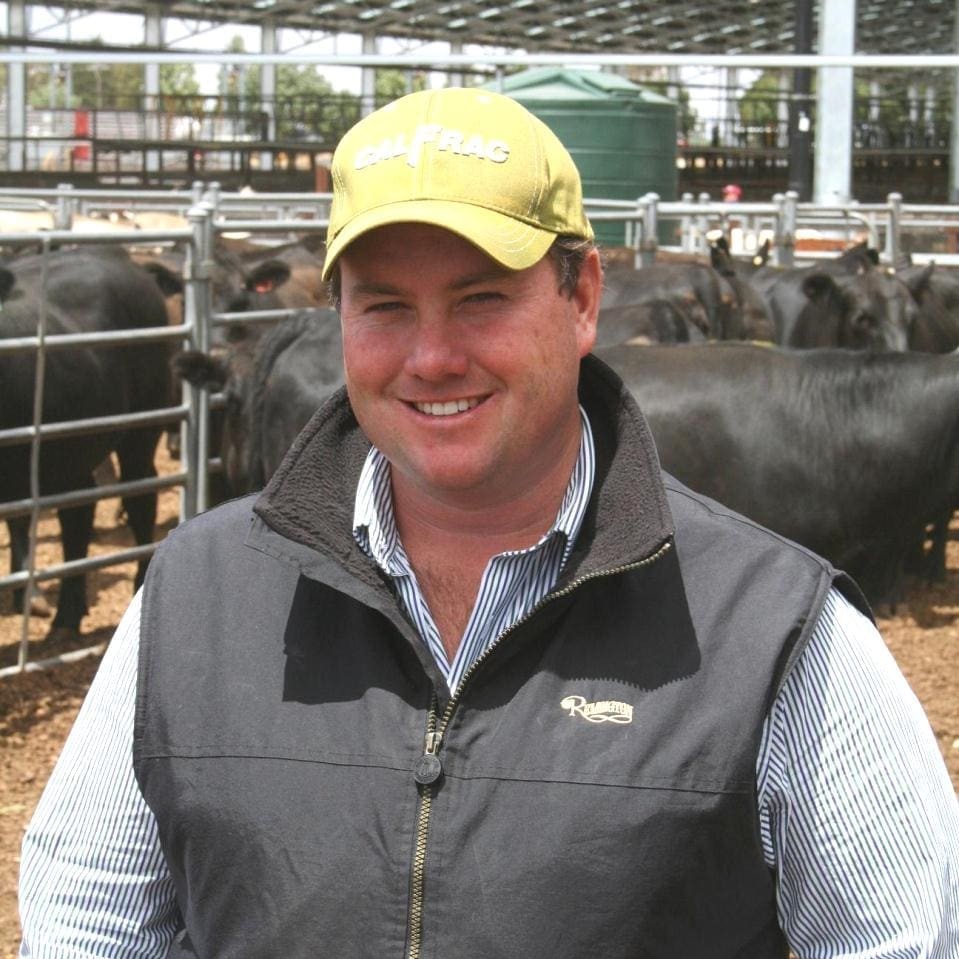 When it rains, it pours. Just ask processors in southern Australia who are being overwhelmed with numbers after spending much of the year scrounging for adequate supplies.
When it rains, it pours. Just ask processors in southern Australia who are being overwhelmed with numbers after spending much of the year scrounging for adequate supplies.
“It’s been an interesting year,” says Ben Davies, T&R Pastoral’s livestock buyer for the South East of South Australia.
‘Interesting’ might be polite code for ‘frustrating as all hell’ as far as the supply cycle is concerned, something typical of the market when the season stays tight.
In such circumstances producers, agents and buyers struggle to find sufficient cattle for extended periods when the market is screaming-out for some reasonable numbers. Inevitably though, not long after conditions in the paddock improve and cattle start to hit their straps, the market is flooded and prices drop away.
“There should have been cattle coming in through August and September, but unfortunately they didn’t come until late September and they’ve ran through October, November and into early December,” Naracoorte-based Mr Davies says.
“That’s why we’ve seen larger numbers in the south in recent months.”
Speeding-up the turnoff of cattle into the market has been the abrupt finish to spring throughout much of the south, with dry conditions in earlier cattle districts like SA's upper South East now putting pressure on producers to offload tradeable animals.
“We’ve probably seen the best of the season now in Keith and Naracoorte and we’re down into Penola, Mount Gambier, Casterton and Hamilton now for our better quality livestock – which is just showing the season is starting to run out as it normally does,” Mr Davies says.
“The supply has come on and probably clogged us up a bit with numbers at the moment, which has made the market a bit softer than it traditionally is at this time of year.”
Feeders on the radar
WHILE prices have been far from spectacular through spring, Mr Davies says cattle had made the most of good conditions earlier in spring and had 'come-home' well.
This also boded well for the upcoming southern weaner sales, at which T&R would be looking to source suitable lines of feeders.
“The cattle we buy during the weaner sales are the same as what we’re looking for throughout the year,” Mr Davies says.
“We’re always looking for Angus feeder steers and heifers, especially if they’re EU-accredited, for our domestic or export grainfed programs. We mainly look for steers ranging from 360-500 kilograms liveweight, so we’re really only buying the top-end of the weaned calves at the weaner sales.”
The majority of T&R’s feeders go to Wanderribby feedlot on the Coorong at Meningie and Mr Davies says feedlot buyers will be crunching the numbers ahead of the weaner sales.
With higher grain prices squeezing margins, it is expected feeder buyers will be operating on a tighter budget in comparison to recent weaner selling seasons.
Also weighing-in on vendors’ pre-sale calculations is the likely lack of any particularly strong grass demand. This will contrast will weaner sales in recent years, most of which have been strongly supported by grass-driven buying support from at least one rain-soaked region of eastern Australia.
“Over the last 12-24 months, there’s always been somewhere in Australia where the season’s been very good,” Mr Davies says.
“Combine that with the fact there hasn’t been a lot of stock around and the cattle job has been quite strong. Unfortunately, we just haven’t got an area that’s really having a cracker season at the moment.”
Regardless, Mr Davies says the volume of quality cattle coming forth at South East and Victorian Western District sales in the next month or so will be compelling for buyers.
“These top-end cattle which come through the weaner sales, you don’t really see them at any other time during the year,” he says.
”You’ve really got to buy a few of those top quality lines to mix into your business and use them throughout the year.”
Mr Davies says the big question yet to be answered was which regional orders would be operating at the sales.
“It’ll be interesting to see who’s here to buy, especially in regards to interstate interest from the likes of western NSW, plus into the north around Armidale and Tamworth, which are all very dry. You wonder how much support will come from those regions,” Mr Davies says.
“Gippsland and much of southern Victoria have generally had a good run seasonally, so you’d expect there would be support from there.“
Signalling some useful hints to producers, Mr Davies says T&R targets cattle that are pre-vaccinated and yards-weaned.
“We like to select genuine breeders’ lines that we’ve seen come through over the years, the proven performers we’ve sourced before or have at least been aware of,” he says.
Mr Davies says T&R feels it is important to have a presence at the weaner sales to support regional producers and agents. However, the company is also sourcing a greater number of its cattle direct from the paddock.
“As our business continues to grow every year, we have to develop relationships with suppliers 52 weeks of the year – and that’s mainly a paddock business,” he says.
“Realistically we’re requiring more and more cattle to be supplied direct from the paddock, working with producers and agents, straight to the feedlot or processing plant.”
